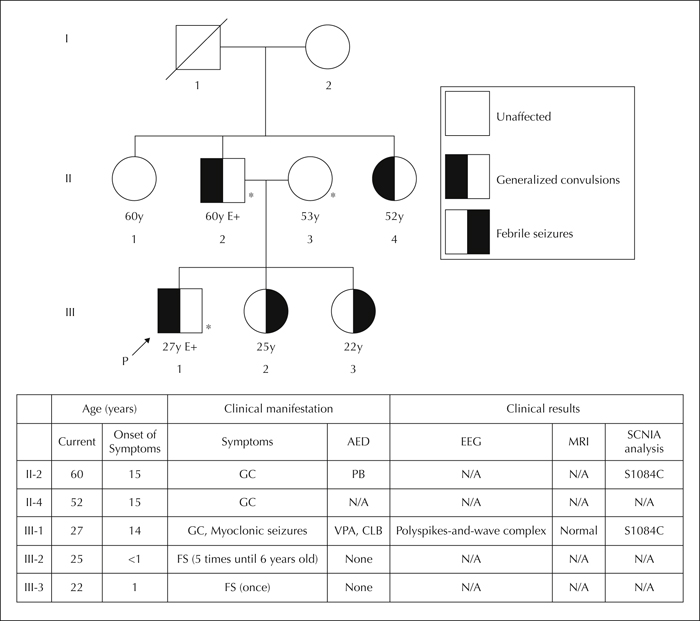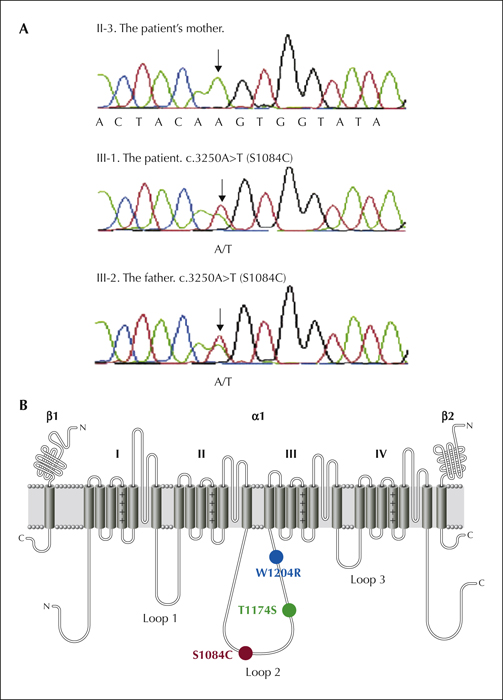Epileptic Disorders
MENUA novel SCN1A mutation in a cytoplasmic loop in intractable juvenile myoclonic epilepsy without febrile seizures Volume 16, issue 2, June 2014
- Key words: SCN1A gene, novel mutation, intractable, IGE, JME, GEFS+
- DOI : 10.1684/epd.2014.0657
- Page(s) : 227-31
- Published in: 2014
Generalised (genetic) epilepsy with febrile seizures plus (GEFS+) is a familial epilepsy syndrome with various phenotypes. The majority of individuals with GEFS+ have generalised seizure types, in addition to febrile seizures (FS) or febrile seizures plus (FS+), defined as either continued FS after 6 years of age or afebrile seizures following FS. A 27-year-old man with no history of FS/FS+ experienced intractable generalised convulsive seizures. The patient's father had a history of similar seizures during puberty and the patient's siblings had only FS. No individual in the family had both generalised seizures and FS/FS+, although GEFS+ might be considered to be present in the family. Analysis of SCN1A, a sodium channel gene, revealed a novel mutation (c.3250A>T [S1084C]) in the cytoplasmic loop 2 of SCN1A in both the patient and his father. Most previously reported SCN1A mutations in GEFS+ patients are located in the conserved homologous domains of SCN1A, whereas mutations in the cytoplasmic loops are very rare. SCN1A gene analysis is not commonly performed in subjects with generalised seizures without FS. SCN1A mutation may be a clinically-useful genetic marker in order to distinguish GEFS+ patients from those with classic idiopathic generalised epilepsy, even if they present an atypical clinical picture.



